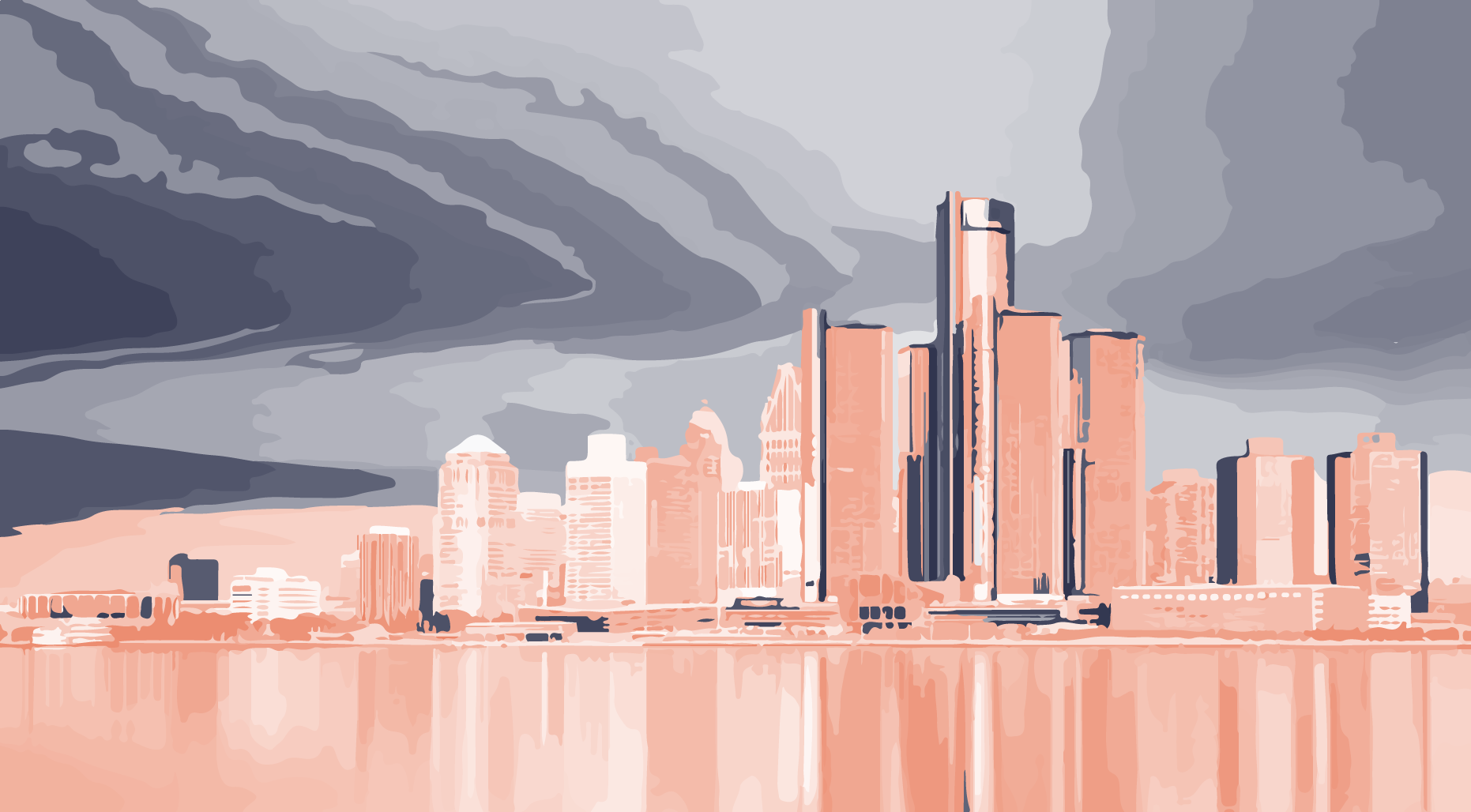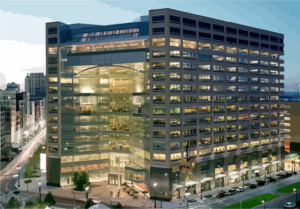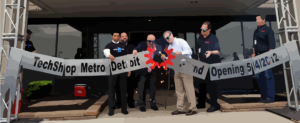 Where once large swathes of Detroit stood vacant and decaying, today this Maker City’s economy is so vibrant – and the influx of talent so great – that Motor City now faces a housing shortage. Last year, housing prices recorded spikes of 11%. In Downtown neighborhoods, it’s not uncommon to see $300,000 condos or the occasional $1 million loft.
Where once large swathes of Detroit stood vacant and decaying, today this Maker City’s economy is so vibrant – and the influx of talent so great – that Motor City now faces a housing shortage. Last year, housing prices recorded spikes of 11%. In Downtown neighborhoods, it’s not uncommon to see $300,000 condos or the occasional $1 million loft.
In 2011, the Live Midtown program was launched by the Henry Ford Health System, Wayne State University and Detroit Medical Center to encourage workers to move to the area by offering $2,500 in annual rent assistance or a $20,000 down payment on a home purchase.
The initial $5 million was matched by the Hudson Webber Foundation, the Michigan Housing Development Authority and the Kresge Foundation. Major employers took note and soon Compuware, Quicken, Blue Cross Blue Shield, Strategic Staffing and DTE Energy added another $5 million to the effort.
By 2014, the program had moved 1,600 people into the city and helped another 1,000 to renew their leases, resulting in a 97% residential occupancy rate, according to Midtown Detroit, Inc. “This expansion not only opens up an array of quality housing stock, but also supports the Detroit Future Cities Framework Plan which identifies this area as an important district to stabilize,” the non-profit said in a statement.
Kick-starting recovery
 When billionaire Dan Gilbert moved the headquarters of Quicken Loans out of the Detroit suburbs and into Downtown’s new Compuware Building in 2009, taking 1,700 employees with him, he helped kick-start the economic recovery of what is today a textbook Maker City. “We pledge to fulfill our commitment to the city,” the founder and chairman of the online mortgage company said at the time. “This is an interim step that allows us to begin transforming Detroit into a high-tech hub of business and ingenuity.”
When billionaire Dan Gilbert moved the headquarters of Quicken Loans out of the Detroit suburbs and into Downtown’s new Compuware Building in 2009, taking 1,700 employees with him, he helped kick-start the economic recovery of what is today a textbook Maker City. “We pledge to fulfill our commitment to the city,” the founder and chairman of the online mortgage company said at the time. “This is an interim step that allows us to begin transforming Detroit into a high-tech hub of business and ingenuity.”
Less than a decade later, Detroit is being cited by the Brookings Institute as one of the nation’s leading examples of a Maker City. At its core is the Detroit Innovation District: officially designated by Mayor Mike Duggan in 2014, it hosts about 55% of the city’s jobs in an area covering just 4.3 square miles – 3.1% of Detroit’s land mass.
‘The District’ – a $1.2 billion, 50-block development – includes two major medical centers, a research university, five university satellite facilities, a design college and more than 30 entrepreneurial service providers. “If you want to be in an area where you’re connected with a whole lot of other entrepreneurs, this is where you come,” Mayor Duggan said at the inauguration.
After the relocation, Gilbert began buying up Downtown skyscrapers in earnest – many of them 20th century architectural treasures – paying as little as $8 per square foot. “They’re like old-school sports cars,” said Quicken real-estate executive Dan Mullen. “These were buildings with so much character, so much history. They don’t exist anywhere else. And it was like: ‘Buy this parking garage and we’ll throw in a skyscraper with it.’”
Since 2011, Gilbert has spent $2.2 billion on Downtown Detroit, buying up 95 decrepit properties and rehabilitating them for new tenants. Nike opened a store there last year; New York burger chain Shake Shack has just set up shop, and sports retailer Under Armour is moving in soon. Gilbert’s also co-chairman of QLine, a 3.3-mile-long streetcar system that will connect Detroit’s largest cultural, entertainment, educational, medical, and employment centers when it opens this year.
New approach to apprenticeship
Today, Quicken is the nation’s second-largest retail mortgage lender and has more than 6,000 staff in Detroit. It originated $96 billion in mortgages last year – an eightfold increase from 2008 – and features in Fortune magazine’s ‘Best Companies’ and Training magazine’s ‘Companies with Outstanding Training and Leadership Development Programs’. Ninety-one percent of employees say they receive the necessary training and development to progress in their careers, with IT and technology staff undergoing at least 200 hours of technical training every year.
Another proponent of the Maker City’s new form of apprenticeship – ‘developing talent to work inside companies where making things by hand is an important part of the ethos’ (Chapter 5, Maker City) – is Shinola, an American luxury lifestyle brand. Specializing in watches, bicycles, and leather goods, the company’s 30,000-square-feet headquarters and watch factory are housed within Detroit’s College for Creative Studies on the fifth floor of the Alfred A Taubman Building, a former automotive research lab.
To build out the watch factory, Shinola partnered with Switzerland-based Ronda, which brought in expert watchmaking veterans to train Shinola’s watch assemblers, none of whom had any prior experience. Today, the majority of the company’s 400 employees are local to Detroit, many having previously worked in the automotive business.
“It’s one thing to invest in equipment and space,” says Shinola’s vice-president of Leather, Jen Guarino. “I mean you can buy space, you can buy equipment. But talent is another thing. And so our huge investment has been more in training people how to do this work than it has been in equipment and space. That’s easy stuff to just go buy or place an order on. You don’t place an order on talent, right?”
Hotbed of innovation
In the three years since Detroit Innovation District’s designation, the city has welcomed a host of new high-tech tenants. Information technology solutions provider VisionIT opened an innovation center to accelerate research and development of new products in a space designed for training and collaboration. A year later, global IT provider Stefanini followed suit.
Last year, a 35,000-square-feet innovation centre was opened by Lear Corp, a global supplier of automotive seating and electrical systems. Here, employees develop new technologies, incubate non-automotive opportunities, and collaborate with the College of Creative Studies and Wayne State University School of Engineering on next-gen products and applications.
The Innovation Institute is ‘the flagship of Henry Ford Health System’s commitment to patient care and research’. It provides think-tank space for developing new medical products and is housed on the second floor of the Old Education Building, on Ford’s main hospital campus, which was designed in 1925 by the revered ‘architect of Detroit,’ Albert Kahn.
 Ford and TechShop, meanwhile, collaborated on a Makerspace that’s 33,000 feet in size, membership driven, and designed to serve as another innovation center for the City of Detroit. The idea was to expose workers at Ford to the skills and tools of Makers, so it could better compete in the innovation economy.
Ford and TechShop, meanwhile, collaborated on a Makerspace that’s 33,000 feet in size, membership driven, and designed to serve as another innovation center for the City of Detroit. The idea was to expose workers at Ford to the skills and tools of Makers, so it could better compete in the innovation economy.
Bill Coughlin is a lawyer and the CEO of Ford Global Technologies, LLC where he handles IP and patents for Ford Motors. “The concept we came up with is giving Ford employees a free membership to TechShop for three months, plus money for a couple of classes once they submit an invention disclosure to my team. So it became part of the invention incentive program within Ford Motor Company.
“What that did for TechShop was give them anchor tenants, if you will, of members. So I think we committed to 400, maybe it was 500 members, around the clock, annually. They could have that. I wasn’t worried about it because I knew I had more than that in terms of Ford employees who want to invent. So they were able to come to start a new facility with relatively low risk.” In one year, the number of patents produced at Ford doubled.
Emphasising education
Central to any Maker City is education in science, technology, engineering, and mathematics (‘STEM’). Among its chief proponents in Detroit are the Henry Ford Museum of Innovation, which – in tandem with global education leader Pearson – is developing innovation courses to foster problem solving, creativity and innovation among middle-school students.
In 2015, the Lightweight Innovations For Tomorrow (LIFT) and the ASM Educational Foundation partnered to create a one-week training program for Michigan’s STEM teachers. “Employers in the five-state LIFT region including Michigan, Ohio, Indiana, Kentucky and Tennessee will need to fill nearly 500,000 manufacturing-related job vacancies created by an aging workforce in the coming decade,” said Larry Brown, executive director of LIFT. “Many of these jobs will require more highly skilled workers who understand new technologies like those being developed in our manufacturing innovation institute.”
Meanwhile, Michigan State University and the Dow Chemical Company Foundation have joined forces to open a $10-million STEM center, in the former Michigan Molecular Institute, offering classes for K-12 students. The university also teamed up with Georgia Tech to expand a national program encouraging interest in STEM. Teams are now using big data to develop connected vehicle technologies; model Great Lakes water flows, and design a mission to test feasibility of smartphone-sized spacecraft driven by the Earth’s magnetic field and energy from the sun.

